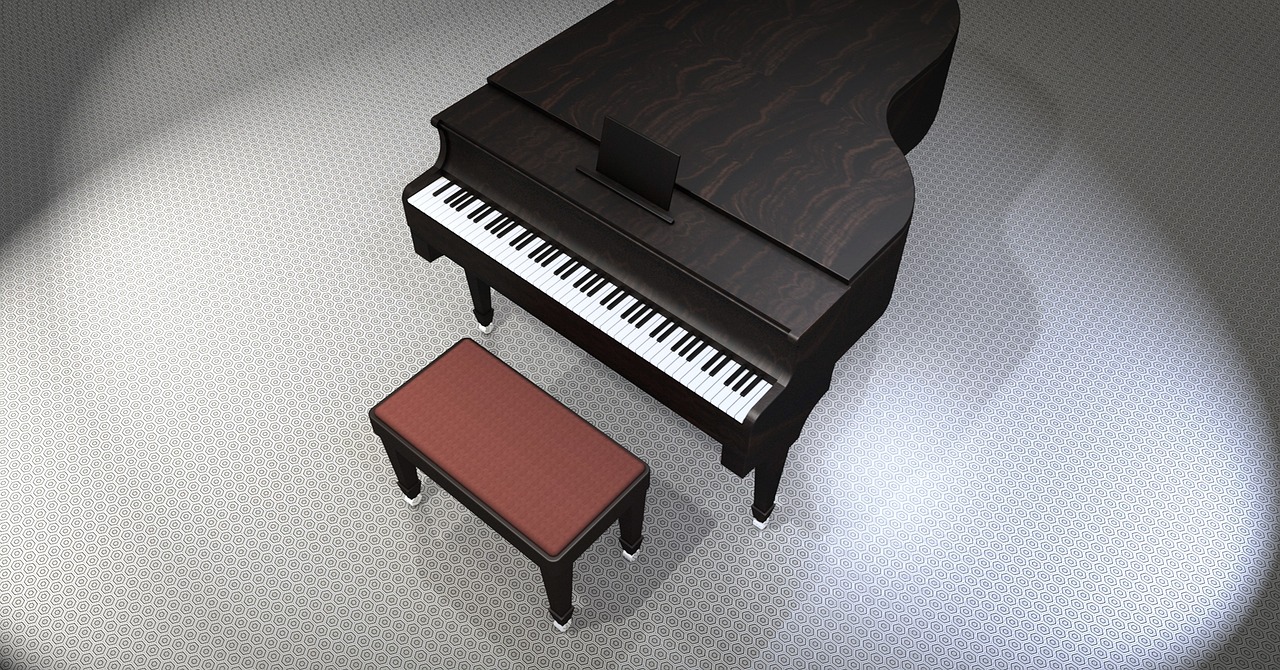Everyone has seen a piano in one form or another. If you can recognize a piano when you see it, you’re ready to read this article. We will use the piano as an example to demonstrate different concepts. That being said, this knowledge applies to all types of instruments that follow the Western music style.
Note
A note is a single sound in a musical composition (song). When you press a single button on the piano, you play a specific note.
In Western music, there are 12 notes. The following image shows the piano buttons labeled with their corresponding notes.

An illustration of a piano with labeled notes.
Did you realize something? Yes! The piano has a repeating pattern. This pattern consists of 12 repeating buttons. Each set of buttons is known as an octave. We’ll talk more about octaves in a bit.
Base Notes
The basic 7 notes are known as the base notes. These are the C, D, E, F, G, and A notes. The white buttons on the piano are the base notes.
Accidental Notes
An accidental note is an alteration to one of the base notes. In a Piano, the black buttons are the accidental notes. They are symbolized by ♯ (read as sharp) and ♭ (read as back).
In a tonal system, the one we use in this website, C♯ means a semitone above C and D♭ means a semitone below D. This makes the C♯ and D♭ notes one in the same. Read more about semitones below.
Octave
Remember the group of 12 notes we talked about earlier? That group is an octave. A piano can have between 7 to 14 octaves, depending on its size.

An illustration of octaves on a piano.
The technical definition of an octave is a bit tricky to explain right now, we’ll leave it for you to discover on your own.
Key or Keynote
In a piano, all the buttons are also known as keys. However, in a musical composition, a key refers to the base of the group of notes, which were used to compose the song. We’ll talk more about this when we explain scales.
Interval
An interval is the difference in the frequency of any two notes. This forms the basis of what a tone and semitone are.
Semitone
A semitone is the smallest possible interval. On a piano, this will be the difference between two adjacent buttons.

An illustration of some labeled semitones on a piano.
Tone
A tone is an interval of two semitones.

An illustration of some labeled tones on a piano.
For example, the interval between D and E is a tone. Notice that there is a black button between the white keys representing D and E notes.
Scale
A scale is a group/collection of notes. This notes group often has a base note called the key. The notes of this group are picked using some set of rules. These rules can be anything and do not need to follow any system. That being said, in practice the rules we choose are based on melodies and harmonies.
There are many scales for you to explore. We’ll start with the most common and widely recognized scales: the major scale and the minor scale. We’ll present them in the key of C to keep things simple.
Major Scale
The rule for this scale is that the intervals between the adjacent notes of the scale are: tone - tone - semitone - tone - tone - tone - semitone.
Example: Major Scale with key C
If the keynote was selected as C, the scale notes would be C, D, E, F, G, A, B, C. The second C is in the higher octave.

An illustration of the major scale in the key of C on piano.
Let me explain how this order of notes follows the rule we laid out earlier. See the following table and you’ll understand the pattern.
| Notes | Interval |
|---|---|
| C - D | tone |
| D - E | tone |
| E - F | semitone |
| F - G | tone |
| G - A | tone |
| A - B | tone |
| B - C | semitone |
Example: Major Scale with key D
If the keynote was selected as D, the scale notes would be D, E, F#, G, A, B, C#, D.

An illustration of the major scale in the key of D on piano.
Minor Scale (natural)
The rule for this scale is that the intervals between the adjacent notes of the scale are: tone - semitone - tone - tone - semitone - tone - tone.
If the keynote was selected as C, the scale notes would be C, D, E♭, F, G, A♭, B♭, C. The second C is in the higher octave.

An illustration of the major scale in the key of C on piano.
With this knowledge, you are ready to read more literature on music. This should be enough for you to read the literature on this website. However, to learn more advanced theory, you’ll have to gain a deeper understanding of each of these concepts and more.
You are now ready to move to our Solfege lessons.
